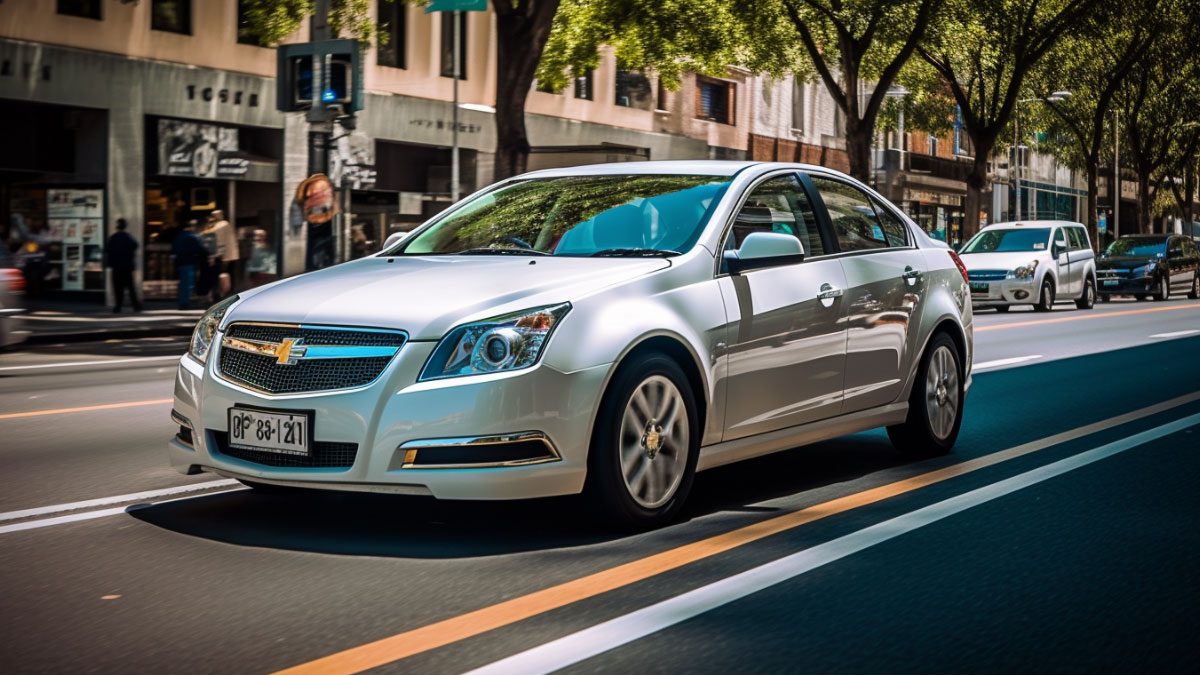What Can Cause ABS and Brake Light to Come On?
The ABS (Anti-lock Braking System) and brake lights are essential warning indicators on your vehicle’s dashboard. These lights are designed to alert you to potential issues with your braking system.
So, what can cause ABS and brake lights to come on? It can happen due to low brake fluid, worn brake pads, or faulty wheel sponsors. Also, malfunctioning ABS modules and some other additional causes can be behind this happening to your automobile.
In this guide, we will talk about the causes of the brake light coming on and their potential solutions. We will also discuss other additional information. So, keep on reading!
Causes of ABS and Brake Light Come on
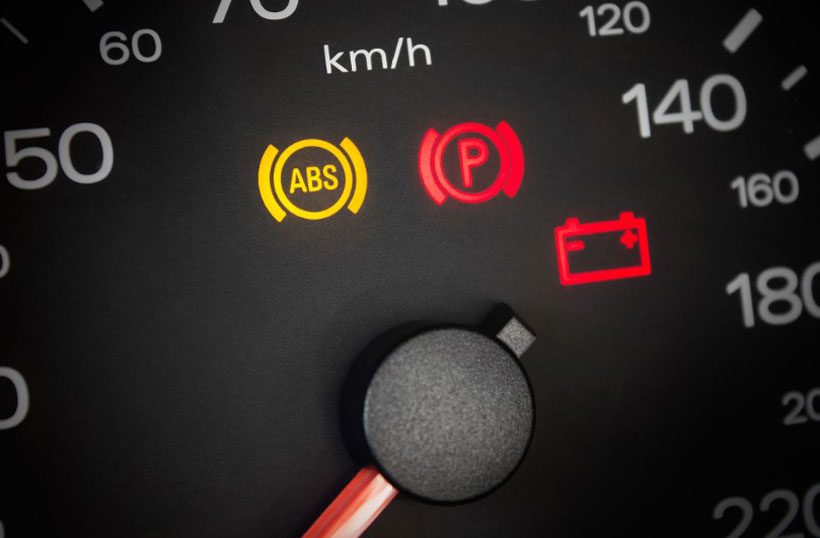
We will now know what caused this to happen to your automobile. The following is a quick overview of the causes and potential fixes to the issues.
| No. | Causes | Fix |
|---|---|---|
| 1. | Low brake fluid level | Refill the brake fluid reservoir |
| 2. | Damaged brake pads | Replacing brake pads |
| 3. | Faulty wheel speed sensors | Replace the faulty sensor |
| 4. | Malfunctioning ABS module | Replace the module |
| 5. | Failed hydraulic pump | Replace the pump |
Here’s the detail of the causes that cause the ABS and brake light to come out.
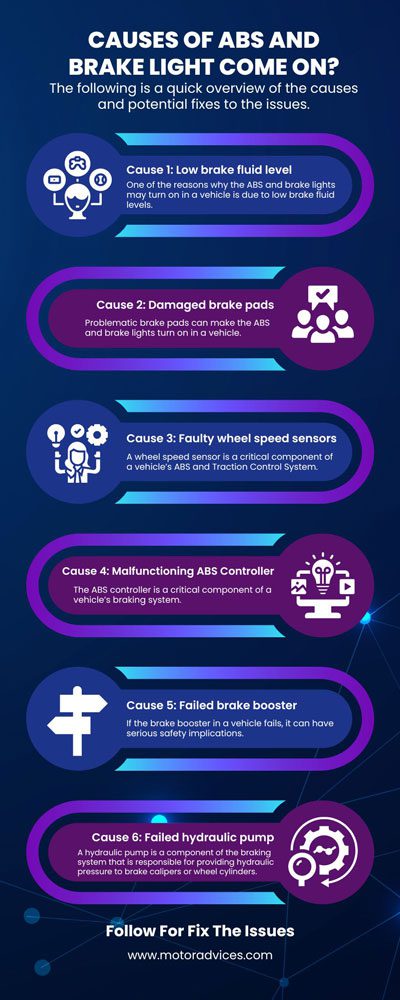
Cause 1: Low brake fluid level
One of the reasons why the ABS and brake lights may turn on in a vehicle is due to low brake fluid levels.
When the brake fluid level in the master cylinder reservoir drops too low, the hydraulic pressure required to operate the braking system is affected. And it can trigger the warning lights.
A drop in brake fluid level can happen due to a variety of reasons, such as a leak in the braking system or if a brake pad is worn out. In the case of a leak, the brake fluid may seep out through a damaged or worn-out brake line, caliper, or wheel cylinder.
Over time, the brake fluid level may decrease to a point where the pressure required to operate the braking system is significantly reduced. And it results in the ABS and brake warning lights turning on.
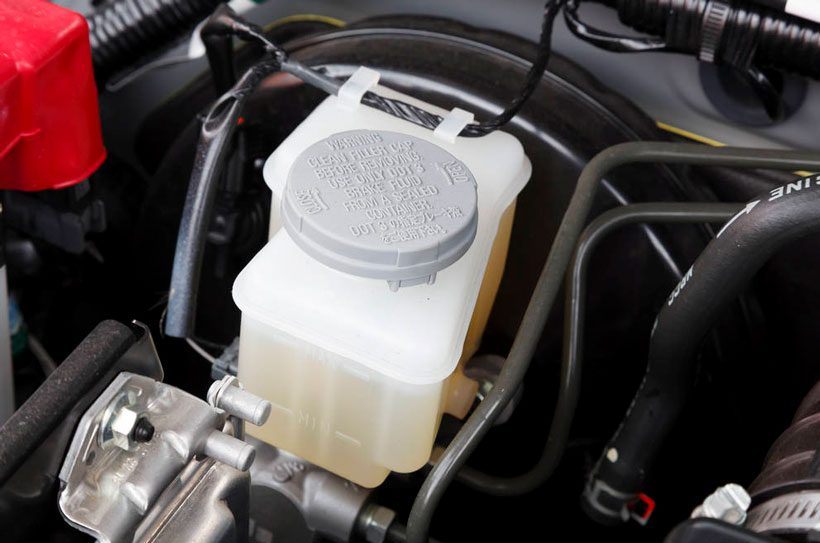
How to Fix the Issue?
In this case, refilling the brake fluid reservoir is required. To do it, follow the steps below:
- Step 1: Look at the side of the master cylinder reservoir to see if the fluid level is between the minimum and maximum marks.
- Step 2: If the brake fluid level is low, use a funnel to add brake fluid to the reservoir until it reaches the maximum level. Make sure to use the type of brake fluid specified in the owner’s manual.
- Step 3: If you have to add brake fluid, then you’ll need to bleed the brake system. This involves opening the bleed valves on the calipers to allow any air that’s been trapped in the lines to escape.
Cause 2: Damaged brake pads
Problematic brake pads can make the ABS and brake lights turn on in a vehicle. When brake pads wear down, it lowers brake fluid levels, triggering the warning lights.
This happens because the caliper piston extends more to compensate for the worn pads, reducing brake fluid in the reservoir. The low fluid affects hydraulic pressure, causing the lights to illuminate.
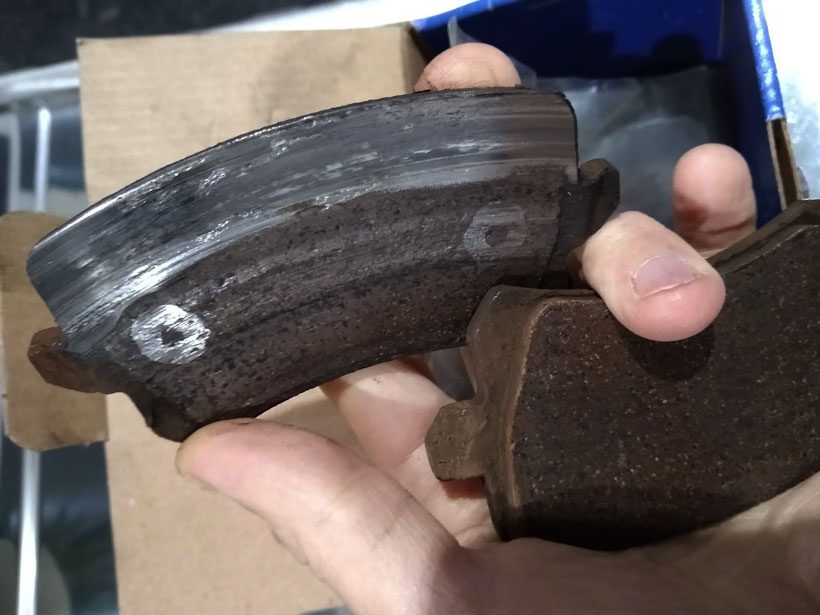
How to Fix this Issue?
In this case, replacing the brake will be required. To do this, follow the steps below:
- Step 1: Park the vehicle on a level surface, set the parking brake and chock the wheels.
- Step 2: Locate the brake pads on the wheel’s rotor. They are usually located inside the caliper. This caliper is a metal housing that fits over the rotor.
- Step 3: Grab a socket wrench or a combo wrench and loosen up those bolts or pins that keep the caliper in place. Take off the caliper and find a cozy spot for it. Just remember, don’t let it hang from brake lines like a daredevil. Keep it safe and sound.
- Step 4: Carefully remove the old ones from the caliper and clean the caliper housing.
- Step 5: Inspect the brake rotor for signs of wear, heat damage, or deep grooves. If it is damaged, it has to be replaced.
- Step 6: New brake pads will be installed into the caliper. Make sure the pad is seated correctly.
- Step 7: Reinstall the caliper onto the rotor. Then, secure it in place using the pins or bolts.
- Step 8: Pump the brake pedal several times to restore full operation, then check the brake fluid level in the reservoir.
- Step 9: the process for the other three wheels.
This fix requires patience and skill together. So, it is often recommended to consult with a professional who is used to doing it.
Cause 3: Faulty wheel speed sensors
A wheel speed sensor is a critical component of a vehicle’s ABS and Traction Control System. It is responsible for monitoring the speed of each wheel and transmitting this information to the ABS module.
This module uses the data to control the braking system and improve traction during acceleration.

How to Fix this Issue?
In this case, repairing or replacing the wheel sensor can be beneficial. Go through the following steps to do so.
- Remove the wheel: To access the wheel sensor, the wheel will need to be removed.
- Inspect the sensor: Check the sensor for any signs of physical damage, such as cracks, rust, or loose connections. If the damage is minor, the sensor may be able to be repaired. Otherwise, it may need to be replaced.
- Check the sensor wiring: Ensure that the wiring leading to the sensor is not damaged or disconnected. If there is damage, repair the wiring before replacing the sensor.
- Replace or reinstall the sensor: If the sensor cannot be repaired, a new one will need to be installed. If the sensor was simply loose, it may be able to be reinstalled into place.
- Reinstall the wheel: Once the sensor has been fixed or replaced, the wheel can be reinstalled.
- Clear the ABS codes: Use an ABS code reader or OBD-II scanner to clear the codes related to the ABS. This will turn off the ABS light and reset the system.
Cause 4: Malfunctioning ABS Controller
The ABS controller is a critical component of a vehicle’s braking system. It is responsible for regulating the pressure on the brakes during emergency stops and preventing wheel lock-up, which can cause skidding and loss of control.
A malfunctioning ABS controller can compromise the performance of the vehicle. So, as soon as possible, replace the ABS module controller to resolve this issue.

How to Fix the Issue?
In this case, replacing the ABS module should be done. Follow the steps below to install a new ABS module.
- Step 1: Gather all the necessary tools and Disconnect the Battery: Before you begin, you will need to gather all the necessary tools, such as a wrench, socket set, pliers, and a new ABS module.
To ensure your safety, disconnect the battery and wait for a few minutes before continuing.
- Step 2: Locate the ABS module: The ABS module is typically located near the master cylinder or in the engine compartment. However, it can also be located in other areas depending on the make and model of the vehicle.
- Step 3: Remove the old ABS module: Use a wrench or socket set to remove the bolts or screws that secure the old module to the vehicle. You may need to use pliers to remove any clips or connectors that hold the module in place.
- Step 4: Install the new ABS module: Position the new module in place, and reattach the bolts, screws, clips, and connectors. Make sure all connections are tight and secure.
- Step 5: Bleed the brake system: After installing the new ABS module, you will need to bleed the brake system. It will ensure that no air bubbles are entered during the installation process.
Cause 5: Failed brake booster
If the brake booster in a vehicle fails, it can have serious safety implications. It applies additional pressure to the pedal, enabling easier slowing down or stopping of the car.
However, a faulty booster can make it challenging or even impossible to bring the vehicle to a complete stop. Additionally, a malfunctioning brake booster can cause the pedal to feel unresponsive, which in turn can activate the ABS and brake lights.

How to Fix this Issue?
Replacing a brake booster can be a complex repair that should be done by a qualified mechanic. However, here are some general steps that may be involved in the process:
- Gather the necessary tools and parts: In addition to replacing it, you may need a socket set, a wrench set, pliers, and other tools.
- Remove the old one: Unscrew any fasteners holding it in place. Disconnect the lines and vacuum lines from the old booster. Remove the booster unit from the vehicle.
- Prepare the firewall: Depending on the specific vehicle, you may need to modify the firewall to accommodate the new one. Follow the manufacturer’s instructions carefully.
- Install the new one: Position the new booster unit on the vehicle and secure it with fasteners.
- Reconnect the brake lines and vacuum lines: Connect the lines and vacuum lines to the new booster unit.
Cause 6: Failed hydraulic pump
A hydraulic pump is a component of the braking system that is responsible for providing hydraulic pressure to brake calipers or wheel cylinders. It pumps brake fluid to control the braking pressure of the wheels.
If the hydraulic pump fails, it can result in a loss of hydraulic pressure, making it difficult or impossible to stop the vehicle. If it fails, it can cause the ABS and brake lights to come on.

How to Fix this Issue?
It is wise to contact a mechanic in this case. Because it is quite a complex procedure that may take time and require to perform plenty of component check-ups. They may perform the following checks:
- Check the hydraulic fluid level: Make sure the hydraulic fluid reservoir is full to the correct level.
- Check for leaks: Look for signs of hydraulic fluid leaks around the pump and throughout the hydraulic system.
- Check the pump drive: Ensure that the pump drive system, such as a motor or engine, is functioning properly and providing power to the pump.
- Check the pump inlet: Inspect the pump inlet for clogs or obstructions that may be preventing fluid from flowing into the pump.
- Check the pump outlet: Inspect the pump outlet for clogs or obstructions that may be preventing fluid from flowing out of the pump.
- Replace or repair the pump: Depending on the specific cause of the failure, you may need to replace or repair the hydraulic pump.
FAQs
Don’t go away! You have a little more to learn here.
In an emergency braking situation, you can determine if your ABS is working by observing the behavior of a brake pedal. If the pedal pulsates rapidly or you hear a clicking noise, it indicates that the ABS is engaging and helping to prevent wheel lock-up.
Yes, it can. You have to bleed all four wheels to ensure that all air bubbles are completely removed from all the wheels.
Final Words
ABS and brake lights come on in a vehicle due to various reasons. These are associated with brake fluid, wheels, and hydraulic pumps.
Some symptoms will help you determine if the problem is actually with the ABS. These include reduced braking performance and fluid leakage. Strange noise and vibration can also be noticed if your automobile goes through this problem.
Seeking professional assistance from a mechanic ensures proper diagnosis and installation. It also ensures the safety and optimal functioning of the vehicle’s braking system.

